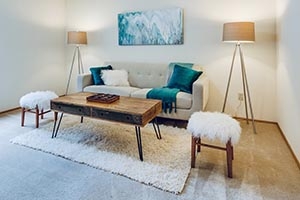
modern style with a southwestern design for area rugs
- Brief overview of small round southwestern rugs store
Exploring the Characteristics of Modern Southwestern Design
Modern style with a southwestern design has become increasingly popular in recent years, especially when it comes to area rugs. The unique combination of contemporary elements and traditional southwestern motifs offers a fresh and vibrant look for any space.
One key characteristic of modern southwestern design is its use of bold colors. Vibrant shades like turquoise, red, and orange are often incorporated into the rug's pattern, creating an eye-catching focal point in the room. These hues evoke the spirit of the Southwest, adding warmth and energy to the overall design.
Another defining feature is the incorporation of geometric shapes. Triangles, diamonds, and zigzags are commonly found in modern southwestern rugs. These shapes not only add visual interest but also pay homage to Native American art forms that have long influenced this style.
Texture is also an important aspect of modern southwestern design. Many rugs feature a mix of materials such as wool, jute, or even leather to create a tactile experience underfoot. This adds depth and richness to the rug while also reflecting the natural textures found in Southwestern landscapes.
When it comes to patterns, you can expect to see a blend of traditional tribal designs with contemporary aesthetics. Patterns inspired by Navajo weavings or Pueblo pottery are often reimagined using modern techniques and color palettes. This fusion creates a harmonious balance between old and new.
Lastly, modern southwestern rugs often showcase intricate detailing through various weaving techniques. Handwoven or hand-knotted rugs are highly valued for their craftsmanship and durability. These details elevate the overall quality of the rug while showcasing the skillful artistry behind its creation.
In conclusion, exploring the characteristics of modern southwestern design reveals a captivating blend of contemporary elements with traditional influences. From bold colors to geometric shapes, texture variations to reimagined patterns, each element contributes to creating visually stunning area rugs that bring warmth and character to any space